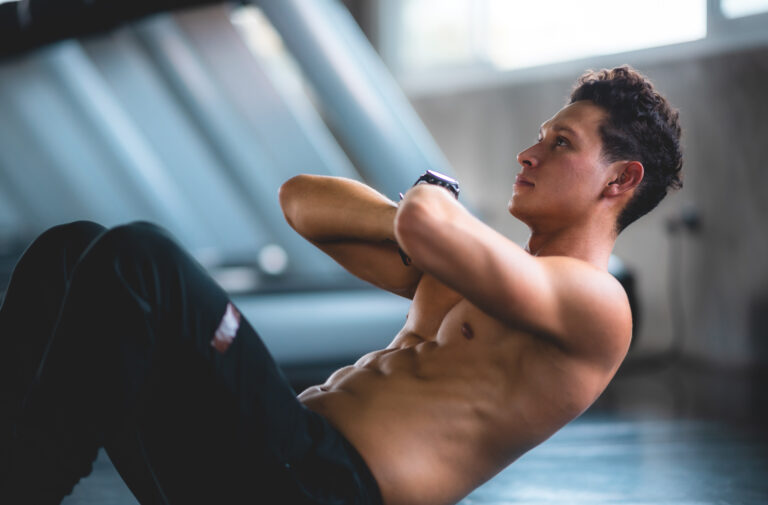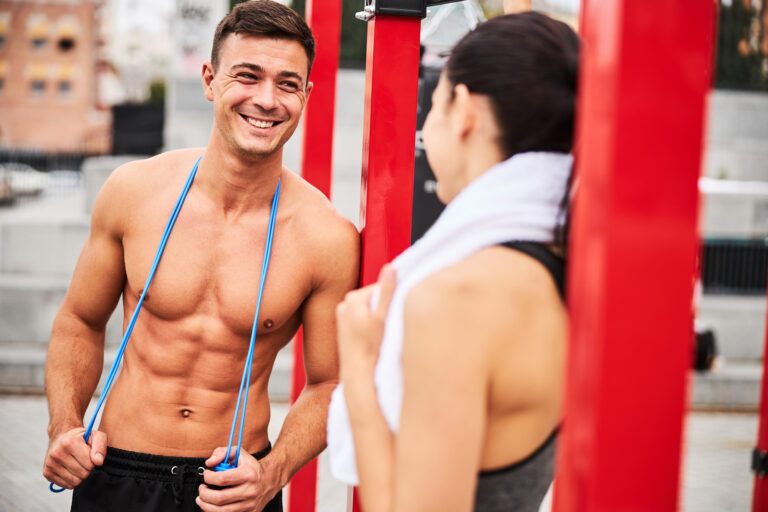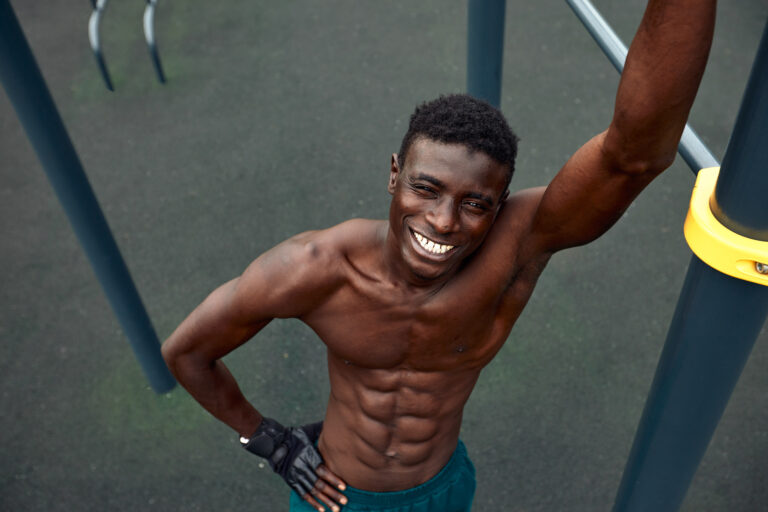What is the Subclavius?
The subclavius muscle, a small but significant component of the human anatomy, plays a crucial role in shoulder stabilization and upper body function. Located just beneath the clavicle, or collarbone, this muscle often goes unnoticed despite its vital contributions to daily movements and physical activities. In the realm of fitness and athletics, understanding the subclavius muscle’s anatomy, functions, and common issues is essential for optimizing performance and preventing injuries. This article will provide a comprehensive overview of the subclavius muscle, highlighting its importance in maintaining upper body strength and stability.
Anatomy of the Subclavius
The subclavius muscle is a slender, triangular muscle situated between the clavicle and the first rib. It originates from the costal cartilage of the first rib and inserts into the inferior surface of the clavicle. This muscle is innervated by the subclavian nerve, which arises from the upper trunk of the brachial plexus, specifically from the fifth and sixth cervical nerves. The primary blood supply to the subclavius muscle comes from the thoracoacromial artery, a branch of the axillary artery.
Anatomically, the subclavius muscle lies in close proximity to several critical structures, including the brachial plexus, subclavian vessels, and the pectoralis major muscle. Its strategic location allows it to perform its primary function of stabilizing the clavicle, particularly during movements involving the shoulder girdle. This stabilization is crucial for the efficient transfer of forces from the upper limb to the axial skeleton.
The subclavius muscle also plays a protective role by cushioning the subclavian vessels and brachial plexus from potential compression against the clavicle. This protective function is particularly important during activities that involve significant upper body exertion, such as lifting heavy weights or engaging in contact sports. Given its anatomical position and functional importance, any dysfunction or injury to the subclavius muscle can have widespread implications for shoulder mobility and upper body strength.
Biomechanical Functions
The subclavius muscle serves as a pivotal stabilizer for the clavicle, ensuring its proper alignment and function during various shoulder and arm movements. One of its primary roles is to anchor and depress the clavicle, which helps maintain the integrity of the shoulder girdle. This function is particularly important during actions that require the shoulder to bear weight or exert force, such as lifting, pushing, and pulling.
By stabilizing the clavicle, the subclavius muscle facilitates the smooth transfer of forces from the arm to the torso, enhancing the efficiency of upper body movements. This stabilization also helps prevent excessive motion of the clavicle, which can lead to shoulder instability and potential injuries. In activities like weightlifting, where precise control of the shoulder girdle is essential, the subclavius muscle’s role becomes even more critical.
Moreover, the subclavius muscle assists in movements that involve the elevation and depression of the shoulder. For instance, during a shoulder shrug, the subclavius works in concert with other muscles to lift the shoulder blade, contributing to the overall range of motion and flexibility of the shoulder complex. This collaborative effort underscores the interconnected nature of shoulder musculature, where the subclavius muscle, despite its small size, plays a vital part in maintaining functional harmony.
In addition to its stabilizing function, the subclavius muscle also helps protect neurovascular structures beneath the clavicle. During intense physical activities, such as contact sports or heavy lifting, the muscle acts as a cushion, absorbing shocks and preventing direct trauma to the underlying subclavian vessels and brachial plexus. This protective function is essential for maintaining the health and function of these critical structures, highlighting the subclavius muscle’s multifaceted role in upper body biomechanics.
Subclavius in Physical Fitness
In the context of physical fitness, the subclavius muscle plays an essential role in various exercises and sports activities. A well-conditioned subclavius muscle contributes significantly to shoulder stability and overall upper body strength, which are critical for optimal performance in many athletic endeavors.
Weightlifting, for example, demands robust shoulder girdle stability to ensure safe and effective lifting techniques. The subclavius muscle, by anchoring the clavicle, aids in maintaining proper shoulder alignment during exercises such as bench presses, overhead presses, and deadlifts. This stability not only enhances performance but also reduces the risk of injuries, such as shoulder dislocations or strains.
In sports that involve repetitive overhead motions, such as swimming, tennis, and volleyball, the subclavius muscle’s role in shoulder stabilization becomes particularly important. The repetitive nature of these activities can place significant stress on the shoulder girdle, and a strong subclavius muscle helps distribute these forces more evenly, preventing overuse injuries. Additionally, in sports like baseball or cricket, where powerful throwing motions are common, the subclavius muscle contributes to the efficient transfer of force from the torso to the arm, enhancing throwing speed and accuracy.
Furthermore, the subclavius muscle is crucial in functional fitness and everyday activities. Movements such as pushing, pulling, lifting, and carrying rely on the coordinated action of multiple muscles, including the subclavius. For instance, carrying heavy groceries or lifting a child requires stable shoulder mechanics, where the subclavius muscle helps maintain the integrity of the shoulder girdle. By ensuring proper clavicular alignment, the subclavius muscle enhances the effectiveness of these movements and reduces the likelihood of musculoskeletal injuries.
Incorporating exercises that target the subclavius muscle into a fitness routine can yield significant benefits. Strengthening this muscle, along with other shoulder stabilizers, can lead to improved posture, greater shoulder mobility, and enhanced overall upper body strength. Specific exercises, such as shoulder shrugs, scapular retractions, and clavicle stabilization drills, can be particularly effective in conditioning the subclavius muscle and promoting shoulder health.
Common Injuries and Disorders
Despite its relatively small size, the subclavius muscle is susceptible to various injuries and disorders that can significantly impact shoulder function and overall upper body mobility. Understanding these potential issues is crucial for prevention and effective management.
One common issue associated with the subclavius muscle is muscle strain. Strains can occur due to overuse, sudden excessive force, or improper movement patterns, leading to microtears in the muscle fibers. Athletes involved in sports requiring repetitive shoulder movements, such as swimmers and weightlifters, are particularly prone to subclavius muscle strains. Symptoms typically include localized pain, tenderness, and difficulty in moving the shoulder.
Another condition related to the subclavius muscle is subclavius muscle syndrome, also known as thoracic outlet syndrome. This condition arises when the subclavius muscle compresses the brachial plexus or subclavian vessels, leading to symptoms such as numbness, tingling, and weakness in the arm and hand. Thoracic outlet syndrome can be caused by muscle hypertrophy, anatomical anomalies, or repetitive stress injuries, and it often requires a multifaceted approach for diagnosis and treatment.
Direct trauma to the subclavius muscle, such as a blow to the collarbone, can also result in injury. Contact sports like football and rugby pose a higher risk for such injuries due to the physical nature of these activities. Trauma can lead to contusions, muscle tears, or even fractures of the clavicle, necessitating immediate medical attention and appropriate management strategies.
Additionally, poor posture and improper biomechanics can contribute to subclavius muscle dysfunction. Prolonged periods of slouching or forward head posture can place undue stress on the subclavius, leading to muscle tightness and discomfort. Over time, this can result in chronic pain and limited shoulder mobility, underscoring the importance of maintaining proper posture and ergonomic practices in daily life.
Effective management of subclavius muscle injuries and disorders involves a combination of rest, physical therapy, and, in some cases, medical intervention. Initial treatment for muscle strains typically includes rest, ice application, and anti-inflammatory medications to reduce pain and swelling. Gradual reintroduction of movement and strengthening exercises, under the guidance of a physical therapist, is essential for complete recovery and preventing recurrence.
For conditions like thoracic outlet syndrome, a comprehensive treatment plan may include physical therapy to address muscle imbalances, ergonomic adjustments, and, in severe cases, surgical intervention. Rehabilitation focuses on relieving compression of the brachial plexus and subclavian vessels, restoring normal muscle function, and improving overall shoulder mechanics.
Preventative Measures and Rehabilitation
Preventing injuries to the subclavius muscle and ensuring its optimal function requires a proactive approach that includes proper training techniques, regular stretching, and targeted strengthening exercises. Incorporating these preventative measures into a fitness routine can significantly reduce the risk of subclavius-related issues and enhance overall shoulder health.
One of the most effective ways to prevent subclavius muscle injuries is through proper warm-up and stretching routines. Before engaging in any physical activity, it is essential to perform dynamic stretches that target the shoulder girdle and upper body. Stretching exercises such as shoulder circles, arm swings, and scapular retractions can help increase blood flow to the subclavius muscle and improve its flexibility, reducing the likelihood of strains and overuse injuries.
Strengthening the muscles that support the shoulder girdle, including the subclavius, is crucial for maintaining shoulder stability and preventing injuries. Incorporating resistance training exercises that target the upper body can enhance muscle endurance and resilience. Exercises such as shoulder shrugs, lateral raises, and scapular push-ups are particularly beneficial for conditioning the subclavius muscle and promoting balanced muscle development.
In addition to strengthening exercises, maintaining proper posture and ergonomic practices is vital for preventing subclavius muscle dysfunction. Avoiding prolonged periods of slouching or forward head posture can reduce unnecessary stress on the subclavius and surrounding structures. Regularly practicing good posture, especially during activities that involve prolonged sitting
or computer use, can help maintain the integrity of the shoulder girdle and prevent muscle imbalances.
For individuals recovering from subclavius muscle injuries, a structured rehabilitation program is essential for restoring normal function and preventing recurrence. Rehabilitation typically involves a combination of physical therapy, targeted exercises, and gradual reintroduction of physical activities. Physical therapists play a crucial role in designing personalized rehabilitation plans that address the specific needs and goals of each individual.
Rehabilitation exercises for the subclavius muscle often focus on gentle stretching, strengthening, and improving shoulder mechanics. Gradual progression from low-intensity to higher-intensity exercises ensures that the muscle regains its strength and flexibility without risking further injury. Techniques such as soft tissue mobilization, ultrasound therapy, and electrical stimulation may also be used to enhance the healing process and alleviate pain.
In cases where thoracic outlet syndrome or other complex conditions are present, a multidisciplinary approach may be necessary. Collaboration between physical therapists, orthopedic specialists, and other healthcare professionals ensures comprehensive care and effective management of the underlying causes of subclavius muscle dysfunction. Surgical intervention, though rare, may be considered in severe cases to relieve compression of neurovascular structures and restore normal muscle function.
Key Takeaways
The subclavius muscle, though small and often overlooked, plays a vital role in shoulder stabilization and upper body function. Understanding its anatomy, biomechanical functions, and importance in physical fitness can significantly enhance athletic performance and prevent injuries. Proper training techniques, regular stretching, and targeted strengthening exercises are essential for maintaining the health and functionality of the subclavius muscle. Recognizing and addressing common injuries and disorders promptly, along with implementing effective rehabilitation strategies, ensures optimal recovery and long-term shoulder health. By prioritizing the care of the subclavius muscle, individuals can achieve better shoulder stability, improved performance, and a reduced risk of injuries in their fitness endeavors.









